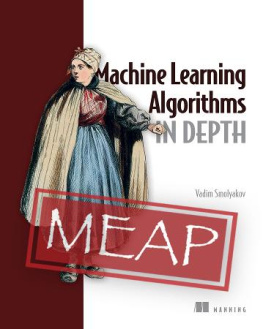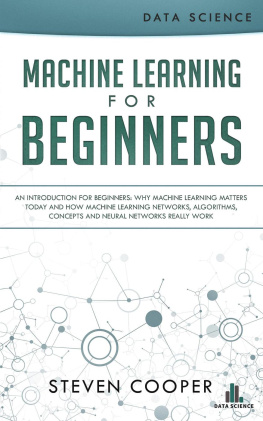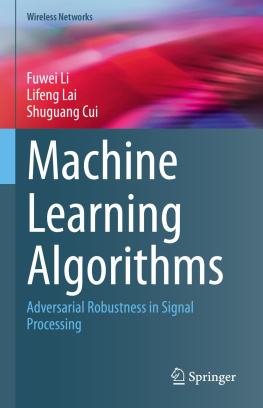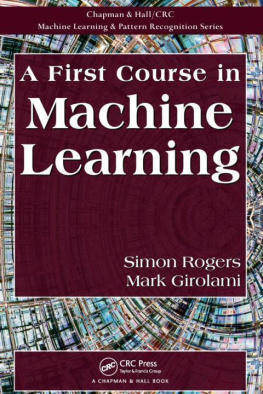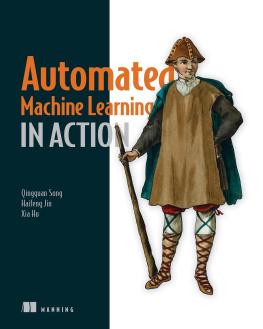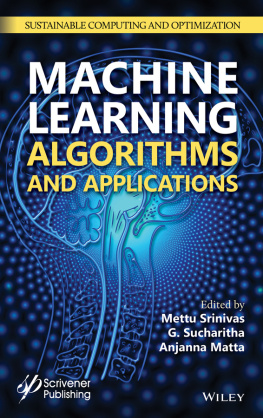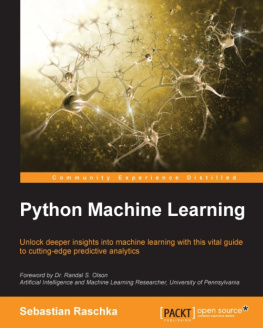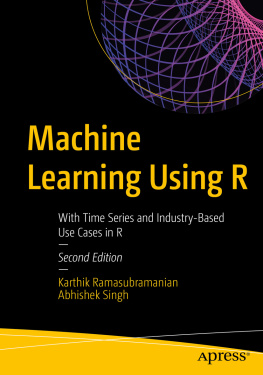Nelishia Pillay - Automated Design of Machine Learning and Search Algorithms
Here you can read online Nelishia Pillay - Automated Design of Machine Learning and Search Algorithms full text of the book (entire story) in english for free. Download pdf and epub, get meaning, cover and reviews about this ebook. year: 2021, publisher: Springer International Publishing, genre: Romance novel. Description of the work, (preface) as well as reviews are available. Best literature library LitArk.com created for fans of good reading and offers a wide selection of genres:
Romance novel
Science fiction
Adventure
Detective
Science
History
Home and family
Prose
Art
Politics
Computer
Non-fiction
Religion
Business
Children
Humor
Choose a favorite category and find really read worthwhile books. Enjoy immersion in the world of imagination, feel the emotions of the characters or learn something new for yourself, make an fascinating discovery.
- Book:Automated Design of Machine Learning and Search Algorithms
- Author:
- Publisher:Springer International Publishing
- Genre:
- Year:2021
- Rating:3 / 5
- Favourites:Add to favourites
- Your mark:
- 60
- 1
- 2
- 3
- 4
- 5
Automated Design of Machine Learning and Search Algorithms: summary, description and annotation
We offer to read an annotation, description, summary or preface (depends on what the author of the book "Automated Design of Machine Learning and Search Algorithms" wrote himself). If you haven't found the necessary information about the book — write in the comments, we will try to find it.
Automated Design of Machine Learning and Search Algorithms — read online for free the complete book (whole text) full work
Below is the text of the book, divided by pages. System saving the place of the last page read, allows you to conveniently read the book "Automated Design of Machine Learning and Search Algorithms" online for free, without having to search again every time where you left off. Put a bookmark, and you can go to the page where you finished reading at any time.
Font size:
Interval:
Bookmark:
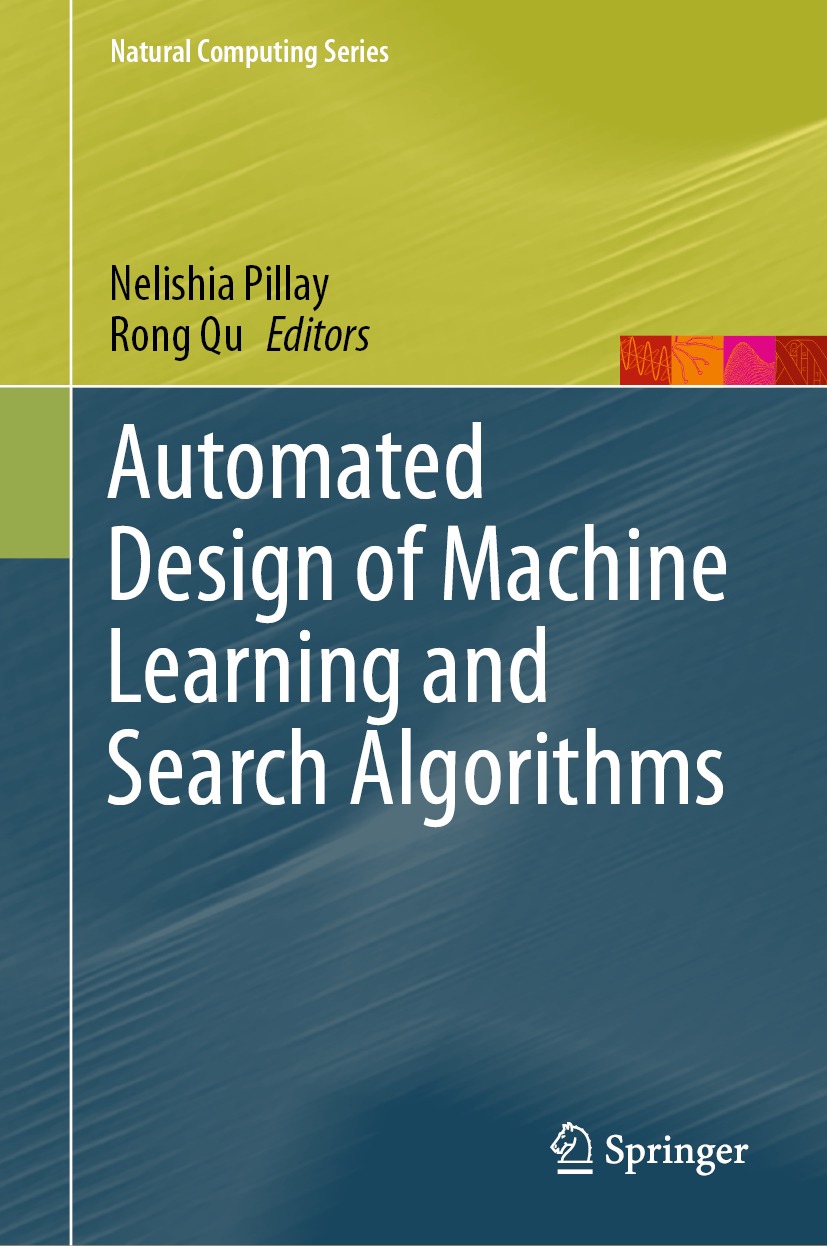
More information about this series at http://www.springer.com/series/4190

This Springer imprint is published by the registered company Springer Nature Switzerland AG
The registered company address is: Gewerbestrasse 11, 6330 Cham, Switzerland
To my parents Perumal and Sinathra Manickum, thank you for believing in me and always being there.
Nelishia Pillay
To my dearest daughter Jess Xue, who makes me a happier and better person.
Rong Qu
It is an honor for me to write the Foreword for the book entitled Automated Design of Machine Learning and Search Algorithms by Nelishia Pillay (University of Pretoria) and Rong Qu (University of Nottingham). Nelishia and Rong have done a wonderful job on selecting and collecting investigation on the important subject of automatically designing algorithms of great appeal to researchers in the field. Interesting themes are covered in the book coming from different techniques and perspectives such as machine learning, combinatorial optimization, theoretical analysis of hyper-heuristics, generation of robotic swarms, generation hyper-heuristics for producing constructive and perturbative heuristics, current and future trends in the automated design using hyper-heuristics, transfer learning in neural architectures and knowledge reuse, and evolution of classifiers for single and multi-class classification.
Automated generation and improving algorithms for solving a particular or a wide set of problems is not an easy task, but with the advancement on artificial intelligence and the computational power in recent years, the research has evolved to produce solid and sophisticated methods with less human intervention. However, this is still a big challenge with a long way to have the crystal ball to devise the best algorithm or tool for solving a given problem, but this book indeed contributes to close that gap, and it is a good resource that every researcher and practitioner in the area should have and read. It is an issue to come up with relevant methods by either evolving complete algorithms given some initial components, or constructing methods that take an existing algorithm and improve it or adapt it to a given domain. Defining the primitives that compose the search space is another important aspect since they should capture the knowledge of experts about useful algorithmic components and operators for allowing the generation of new algorithm variants. We need competent frameworks and architectures for integrating and combining algorithmic constituents and techniques to strive steadily towards the ultimate goal.
This book includes recent advances across automated machine learning and automated algorithm design, where the performance of techniques and algorithms has been strengthened with the support of state-of-the-art models, theories, frameworks and benchmarks. The emerging research directions in those areas present a series of challenges over multiple research communities in machine learning, bio-inspired computation and optimization. Other issues related to automated design are raised in the book and presented as future directions such as reusability, explainable automated algorithms, computational costs, theoretical aspects, automated design standardization, and semi-automated design.
My recognition goes to Nelishia and Rong, two successful female researchers in our community. I know that they have worked very hard to make possible this special collection.
As we move into the fourth industrial revolution, the need for off-the-shelf tools for designing machine learning and search algorithms to solve real-world problems is fast-increasing. This book is comprised of chapters written by leading researchers in automated design of machine learning and search algorithms, highlighting current trends and future directions in the fast-developing area.
Chapter provides an introduction to the book and overviews the area of automated design of machine learning and search algorithms, the topics covered by the subsequent chapters, and challenges experienced in the research.
Chapter presents an overview of methodologies developed in automated machine learning (AutoML) within the last decade, with the definitions of components of AutoML, providing a nice introduction to the topic.
Chapter provides a standardisation for search algorithms based on General Combinatorial Optimisation Problem (GCOP), a new model that defines automated design of search algorithms as an optimisation problem.
Chapter focuses on the theoretical aspects of automated design, an area which has not received sufficient attention. A complexity analysis of hyper-heuristics is presented for selecting heuristics for combinatorial optimisation.
Chapter presents AutoMoDe, a novel approach for the automated offline design of robot swarms by combining and configuring parametric modules of low-level behaviors to evolve high-level collective behaviors.
Chapter presents a novel generation hyper-heuristic for the automated generation of constructive and perturbative heuristics for highly different optimization problems which are encoded as intermediate graphs.
Font size:
Interval:
Bookmark:
Similar books «Automated Design of Machine Learning and Search Algorithms»
Look at similar books to Automated Design of Machine Learning and Search Algorithms. We have selected literature similar in name and meaning in the hope of providing readers with more options to find new, interesting, not yet read works.
Discussion, reviews of the book Automated Design of Machine Learning and Search Algorithms and just readers' own opinions. Leave your comments, write what you think about the work, its meaning or the main characters. Specify what exactly you liked and what you didn't like, and why you think so.


